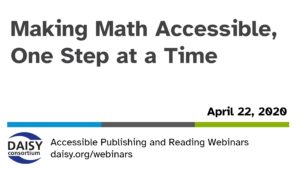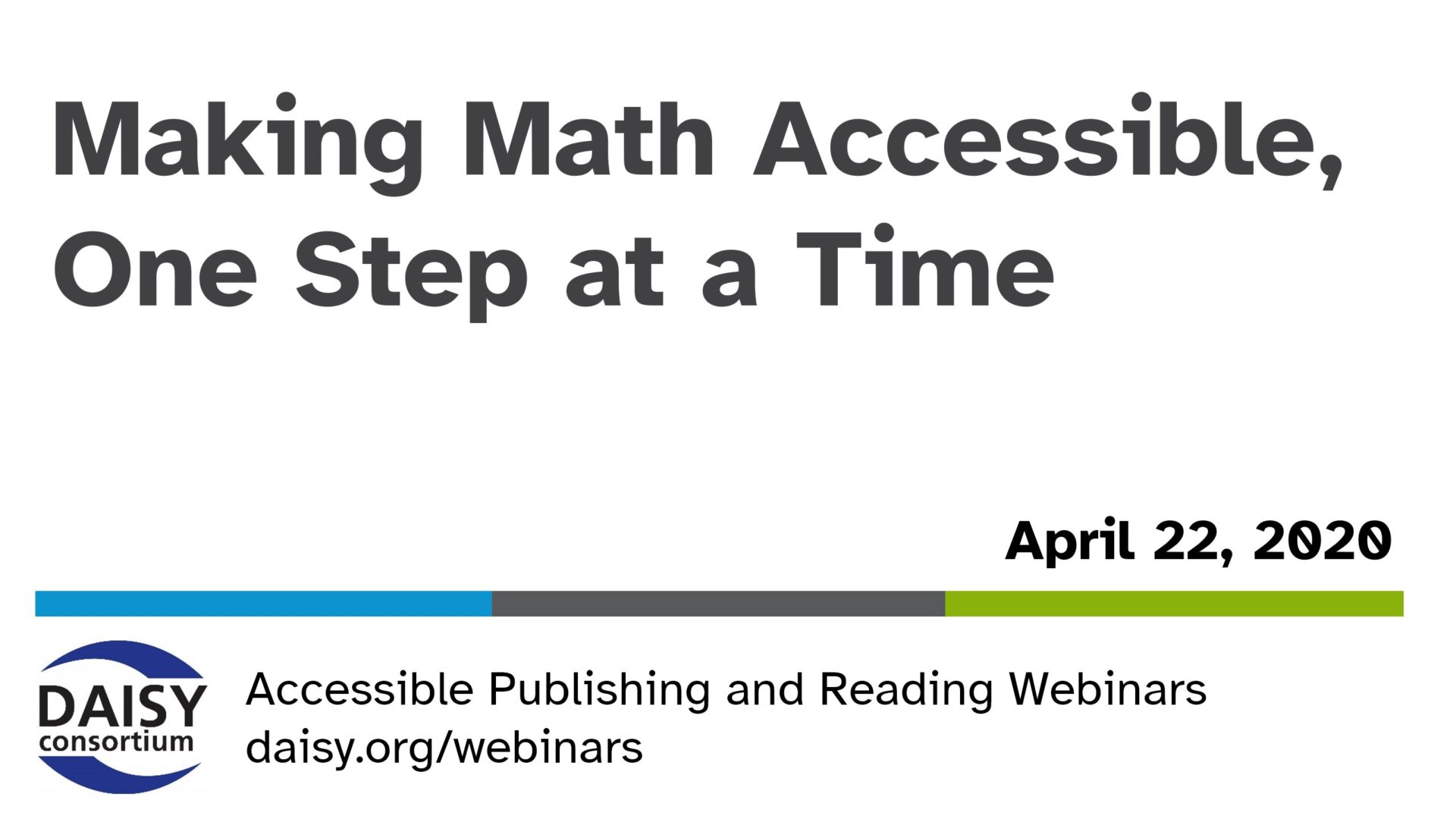Making Math Accessible, One Step At a Time (W)
 In our series of free weekly webinars April 22nd saw a session focused on the strategies for making Math accessible to readers with a print disability.
In our series of free weekly webinars April 22nd saw a session focused on the strategies for making Math accessible to readers with a print disability.
This page contains:
Full Video of the Webinar
Speakers
- Richard Orme, DAISY Consortium—Host and Chair
- Abi James—Abilitynet and University of Southampton
- Alex Cabral—UX Researcher, DIAGRAM
- Matt Nupen—Senior Product Manager, DIAGRAM
Session Overview
Many children have disabilities around learning and attention, such as dyslexia, dyscalculia, and ADHD and, sadly, these students are significantly more likely than their peers to repeat a grade or drop out of school. Lack of support and poor performance can also prevent them from continuing on to higher education, thereby locking these students out of certain career fields entirely. These types of barriers are particularly strong in the field of mathematics.
Abi James began this webinar by explaining the impact of these difficulties and, in particular, how the struggle with how to learn math can severely affect a student’s success at high school and at college. For many learners, the ability to read or understand math is at the root of the problem and accessible math can help with this—decoding the math itself to help with accuracy and understanding.
Matt Nupen explained that it can be very difficult to diagnose learning difficulties like this early on. Once diagnosed, there are a number of good methodologies and tools which can help such as MathShare which enables a student to show their workings throughout their progression in a step by step process. Free and open source, MathShare is the only tool that currently allows this.
Alex Cabral also showed us the tools: PhET and Desmos, which work with students interactively on math concepts, focussing on the process rather than the solution.
This webinar shows how we can support students who have math challenges by using the various tools available, developing their number sense and using different modalities to solve problems.
Related Resources
- PowerPoint slide deck (992 KB)
- Full transcript Word document (36 KB)
Referenced in the webinar were:

